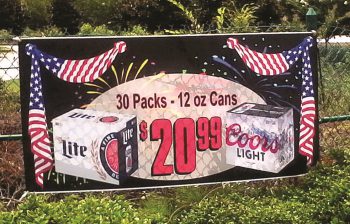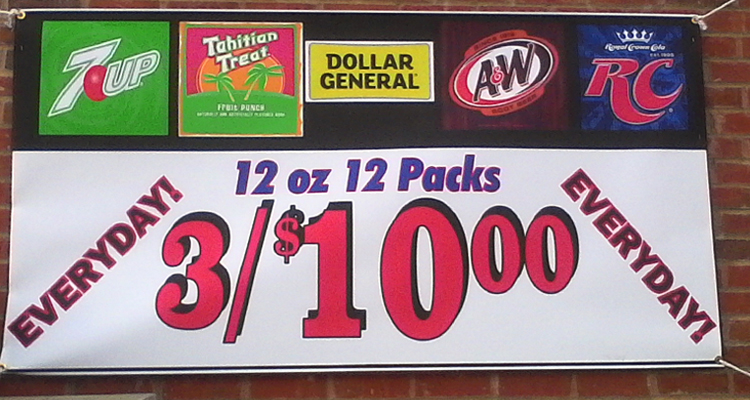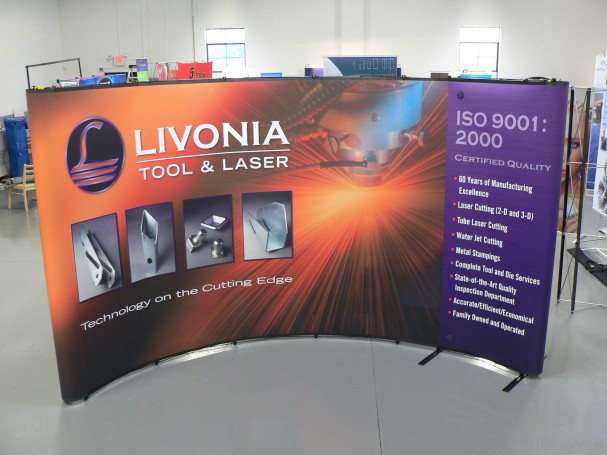Earlier this year, we launched LexJet Flex Tek 170g for aqueous printers, and it’s turned into a fast favorite among print service providers looking for a cost-effective, easy-handling option for banners.

This lightweight, 100% non-woven polyester is finished with a slight embossed texture that gives it the look and feel of a woven fabric, making it an ideal option for both banners and canvas wraps.
At Jackson Beverages in LaGrange, Ga., it’s become the new go-to for short-term outdoor banners.
“Since our primary use of banner/canvas material is outdoor signage, the two most important qualities are water resistance and physical strength in windy weather,” says Jackson Beverages’ Tom Weeks. “Flex Tek’s coating proved to keep the ink colors bright in foul weather and blazing southern sun.”
The polyester base also adds to its durability. “Although it is quite light and easy to handle, it is considerably more tear-resistant than any other non-woven fabric based banner material I have used,” says Weeks, who often finishes Flex Tek with grommets for easy hanging. “My overall impression of Flex Tek is that it is a very good medium for outdoor banners that will hang for less than a year.”

For Vern Goodner, print services manager at Orgill, price was a big concern. Orgill supplies products to 6,000 hardware stores and dealers in more than 60 different countries. Goodner runs the print shop where he produces hundreds of flyers, posters and more for store displays.
Orgill also hosts a 1 million square-foot tradeshow two times per year, in which the company creates multiple mock stores to showcase the latest hardware goods. In these stores, Goodner makes 200 retractable banners, which he has now switched over to Flex Tek.
“I was looking for something with a bright white that gives an eye pleasing to eye popping color,” Goodner says. “And was as affordable as possible.”
At $0.50 per square foot he’s now considering switching all the tradeshow banners to Flex Tek. Both Weeks and Goodner print Flex Tek on Canon imagePROGRAF wide-format aqueous printers.
LexJet Flex Tek 170g Product Highlights:
- PVC-free / recyclable
- Versatile media for wall art, banners, gallery wraps
- Can be grommeted or stitched and used indoors or out
- Images look great close-up or at long-range viewing
- Also available: LexJet Flex Tek SUV 200g, compatible with eco-solvent, latex and UV-curable inks


